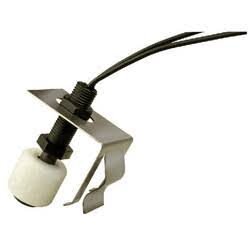My septic tank overflowed onto my lawn the other day. Noticed funny smell, saw standing water near tank, it smelled like poo, and called septic man. He pumped tank and determined my toilets were both leaking through flapper valves (I didn't realize that could be happening without hearing weird noises at night, but it was). He reckoned new flapper valves would solve problem, and hopefully it has, but I'm a little spooked at talk that the overflow could wash solids into the leach field and damage it. So I want some detection that fluid level in tank is getting too high.
You can buy overflow detectors, but they involve mechanical float valves (like the one in a toilet tank). These are binary (overflow, or no overflow) and they seem clumsy - you have to install them at the right height, etc - and likely prone to failure. Seems to me that a better and easier-to-install one could be solid-state. Just a rod that you insert through a hole drilled into the tank hatch, with several electrodes in it, each of which detects fluid has reached its height. I'm thinking it could just be a 2-3ft piece of PVC that covers the full vertical height of fluid levels I'd want to detect. One long electrode that full height, and several point electrodes nearby. N+1 wires coming out, where N is number of point electrodes, all connected to simple N-channel A/D converter which measures resistance between long electrode and each point electrode. Presumably the resistance between long electrode and a point electrode above water level would be orders of magnitude higher than resistance to electrode submerged in poo-water.
Anyhow, this probably seems way too complex too many. But I'm a EE and it sounds like fun to me, so I welcome suggestions from any like-minded people !
You can buy overflow detectors, but they involve mechanical float valves (like the one in a toilet tank). These are binary (overflow, or no overflow) and they seem clumsy - you have to install them at the right height, etc - and likely prone to failure. Seems to me that a better and easier-to-install one could be solid-state. Just a rod that you insert through a hole drilled into the tank hatch, with several electrodes in it, each of which detects fluid has reached its height. I'm thinking it could just be a 2-3ft piece of PVC that covers the full vertical height of fluid levels I'd want to detect. One long electrode that full height, and several point electrodes nearby. N+1 wires coming out, where N is number of point electrodes, all connected to simple N-channel A/D converter which measures resistance between long electrode and each point electrode. Presumably the resistance between long electrode and a point electrode above water level would be orders of magnitude higher than resistance to electrode submerged in poo-water.
Anyhow, this probably seems way too complex too many. But I'm a EE and it sounds like fun to me, so I welcome suggestions from any like-minded people !



